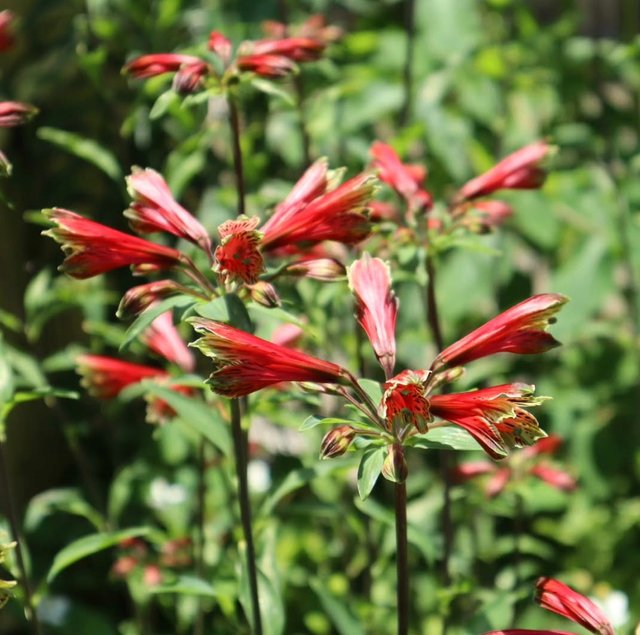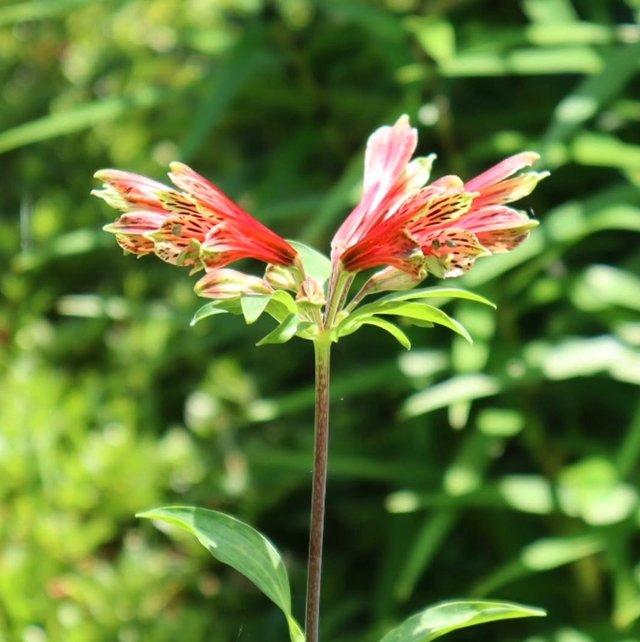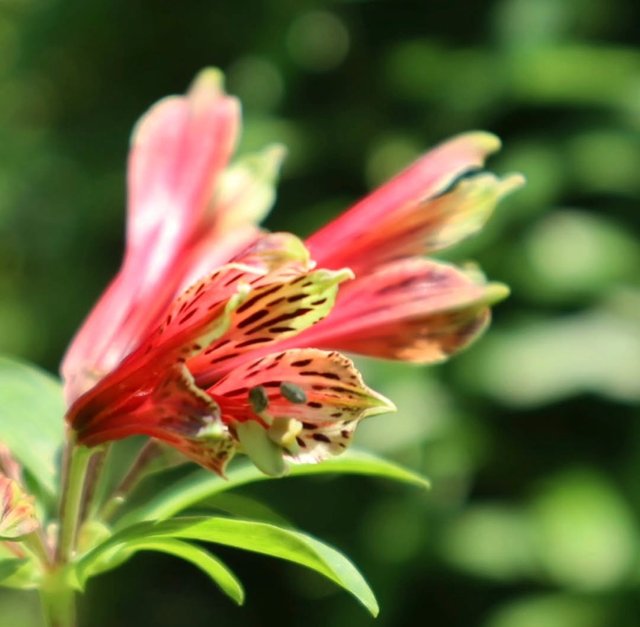Alstroemeria psittacina
Among the many dazzling species that grace the botanical world, Alstroemeria psittacina stands out for its vivid beauty, unique markings, and intriguing backstory. Commonly known as the Parrot Lily, Brazilian Lily, or Peruvian Lily, this flower is as colorful and exotic as its name suggests. Native to South America, this perennial plant is widely cherished in gardens around the world and is increasingly recognized for both its ornamental value and its ecological versatility.
Alstroemeria psittacina is a tuberous, herbaceous perennial that typically grows to about 1 to 1.5 feet in height. What makes it instantly recognizable is its striking, lily-like flowers, each one adorned with deep red, crimson, or magenta petals that are boldly streaked with green or maroon brush-like markings. The contrasting colors resemble a parrot’s feathers, which explains the origin of its name—psittacina, from the Latin word psittacus, meaning "parrot.The plant’s narrow, lance-shaped leaves are arranged in a unique resupinate pattern causing them to appear upside down.
Blooms are typically trumpet-shaped with six tepals and appear in clusters atop tall, leafless stems during the summer and fall.Alstroemeria flowers twist as they grow, a trait known as resupination, which results in their leaves appearing upside down!The species has been used to create hybrid cultivars, blending the flamboyant looks of psittacina with the hardiness of other Alstroemeria species.




